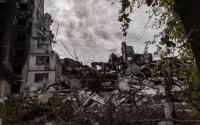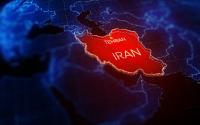A New Era of Nuclear Weapons as Bush's Buildup Begins with Little Debate in Congress
December 7, 2003James Sterngold
Congress, with only a limited debate, has given the Bush administration a green light for the biggest revitalization of the country's nuclear weapons program since the end of the Cold War, leaving many Democrats and even some hawkish Republicans seething.
"This has been a good year," said Linton Brooks, the administrator of the National Nuclear Security Administration, which develops and manages the country's nuclear weapons arsenal. "I'm pretty happy we essentially got what we wanted."
Reversing a decade of restraint in nuclear weapons policy, Congress agreed to provide more than $6 billion for research, expansion and upgrades in the country's nuclear capabilities. While Congress approved large sums to maintain the existing nuclear arsenal even during the Clinton years, this year's increases will finance multiyear programs to design a new generation of warheads as well as more sophisticated missiles, bombers and re-entry vehicles to deliver them.
"This is a fairly radical new way of thinking about things," Brooks said, adding that it amounted to "a more fundamental shift in the way we look at this than many people realize."
That the change is indeed both "radical" and "fundamental" is about the only thing critics of the administration agree with.
"It hasn't been perceived as such, but this is a nuclear revival," said Stephen Schwartz, publisher of the Bulletin of the Atomic Scientists.
Deeply disturbing to critics on both sides of the political spectrum is how little public or congressional discussion has taken place, and how little detailed information the Bush administration has provided on its strategies and plans.
"I'm totally offended by this administration," said Rep. Curt Weldon, R- Pa., a onetime White House ally on nuclear issues, and vice chairman of the House Armed Services Committee. "I happen to think they're out of bounds on this. There's an important sea change in the world, and we have no idea what our policy is.
"It's a major national scandal in the making," Weldon said in an interview with The Chronicle last week. "I'm totally frustrated."
Yet for all their misgivings, influential Republicans like Weldon managed to impose only minuscule cuts of less than $20 million on the programs for new warhead development, leaving plans for jump-starting the U.S. nuclear arsenal and warhead production capabilities largely intact.
"We know we're getting rolled," said Rep. Ellen Tauscher, D-Walnut Creek, a vocal opponent of the new nuclear push. "All we did was give the president a sizable victory instead of a complete victory. They got everything they wanted as far as the significant issues. It is a huge ideological victory."
"Nothing that happened in Congress stops (the Bush administration) from doing what they want to do at this point," said Robert Civiak, a nuclear physicist and former weapons analyst at the Office of Management of Budget. "The message that got across is that the country is ready for new kinds of nuclear weapons."
Nuclear-weapons opponents argue that the country has little idea about the direction it is taking with such weapons of mass destruction.
"There's no debate on this at all," said Andrew Lichterman, program director of the Oakland-based Western States Legal Foundation, a nonprofit group that favors arms reductions. "These programs are not being questioned in the political mainstream at all."
The Bush administration has argued that the new doctrine and new weapons are needed because the world has changed since the Cold War, when the United States deterred the Soviet Union from striking by developing a massive arsenal that promised complete annihilation. Now, the administration argues, there are new, regional menaces from such countries as North Korea and Iran.
To deter those threats, the administration is seeking a new stockpile of both some Cold War-era warheads and new, smaller weapons that can be used for limited attacks and for destroying caches of weapons of mass destruction, especially in buried bunkers, without causing indiscriminate destruction and loss of life. It has also proposed a policy of possible pre-emptive first use of nuclear weapons in emergencies, even against non-nuclear states.
A recent study entitled "Missiles of Empire: America's 21st Century Global Legions," by Lichterman of the Western States Legal Foundation highlights not only the administration's push for new kinds of warheads, but also the billions it is planning to spend on reducing the time it would take to launch a nuclear strike and on a new generation of missile re-entry vehicles, among other things. The re-entry vehicles would allow the military to steer warheads toward targets, even moving targets, entering the atmosphere from space.
Even GOP hawks upset
It is precisely those kinds of provocative new weapons capabilities -- at a time when the administration seeks to prevent proliferation of weapons of mass destruction elsewhere -- that worries even hawkish Republicans.
"We have more nuclear weapons now than we know what to do with,'' said Rep. David Hobson, R-Ohio, chairman of the House Appropriations Committee's energy and water subcommittee, which controls the nuclear weapons budget. "I'm concerned about our image in the world when we're telling others not to build these things, and then we push these new programs."
Rep. Joel Hefley, R-Colo., a senior member of the Armed Services Committee who voted against funding some programs, argued in an interview, "We don't need new weapons, and in fact we cause more harm than good in our relations with other countries and in our moral position on nuclear proliferation. I think that they're almost obsolete. I'm not convinced that we have to have that capability."
The Republican lawmakers conceded that their defiance had been more symbolic than substantive. Among other things, the administration succeeded in pushing through the repeal of the law banning the development of smaller, more usable low-yield warheads, and it got approval to begin research into advanced weapons concepts for the future. Congress also provided funding for study of a new "bunker-buster" warhead.
A number of the new initiatives also bring the promise of increased spending in the future. For instance, Congress approved increasing the readiness of the Nevada Test Site, where weapons were tested underground until a ban was put in place in 1992. The NNSA has estimated it would cost as much as $83 million over three years to increase the level of readiness, and an additional $25 million to $30 million a year to sustain that level.
Congress also approved with virtually no debate $320 million for manufacturing new "pits," the plutonium cores of warheads, almost $90 million more than last year. More than $135 million was appropriated for a program to keep tritium, a radioactive gas used to boost the power of warheads, ready for weapons use and another $265 million for a broad campaign to refurbish the facilities used to produce and maintain the nuclear arsenal.
Republicans acknowledged that the few cuts they did make were achieved in the face of intense White House pressure -- and, as Brooks acknowledged, amounted to only "one-tenth of a percent of my budget." "I'm trying to send messages about priorities and what is important to the long-term future of this country," said Hobson. "We sent some messages, and the question will be whether they get them or not."
The GOP critics, all advocates of a strong defense, also admitted that they did not attack the broader array of programs on the congressional floor.
"I guess my feeling is that I would not want us to unilaterally disarm and get rid of our nuclear potential," said Hefley. "But at the same time I'm not comfortable with seeing us maintain all of the nuclear weapons arsenal. How can we in good conscience upgrade and develop new nuclear weapons?"
'An insurance policy'
Even Democrats who have been passionate in their criticisms of Bush's policies admitted that they felt they had to vote for the bulk of the programs.
Tauscher, when asked why she did not fight the billions of dollars in other budget items, such as rehabilitation of the warhead manufacturing capability and the development of the next generation of missiles and bombers, said some nuclear weaponry had to remain in the nation's defensive arsenal.
"As far as I'm concerned, it's an insurance policy," she said.
But even inside the administration, questions have been raised about the rationale for the new nuclear posture. The Pentagon, notably, is not pushing for the new warheads. A classified study conducted this summer by the Defense Science Board, which was leaked last month, stated, "Current (Department of Defense) structure provides neither clear requirements nor persuasive rationale for changing the nuclear stockpile."
John Harvey, director of the policy planning staff at the National Nuclear Security Administration, a division of the Energy Department, remarked in an interview earlier this year, "We need to tell the military what's possible, even if they haven't asked the question yet. Sometimes the services don't know the right questions to ask."
Weldon said that the best he could do was wait and wage a bigger battle next year. He said he was trying to put together a group to study the entire arsenal and examine how it might be transformed to deal with the new threats.
"The debate was on the smaller things this year," he said. "I think next year you'll see that debate widen. Next year will be different, I assure you."
The administration does not seem concerned. Asked if the lawmakers' small budget cuts or expressions of concern altered the administration's direction, Brooks of the NNSA replied, "No, it doesn't.






